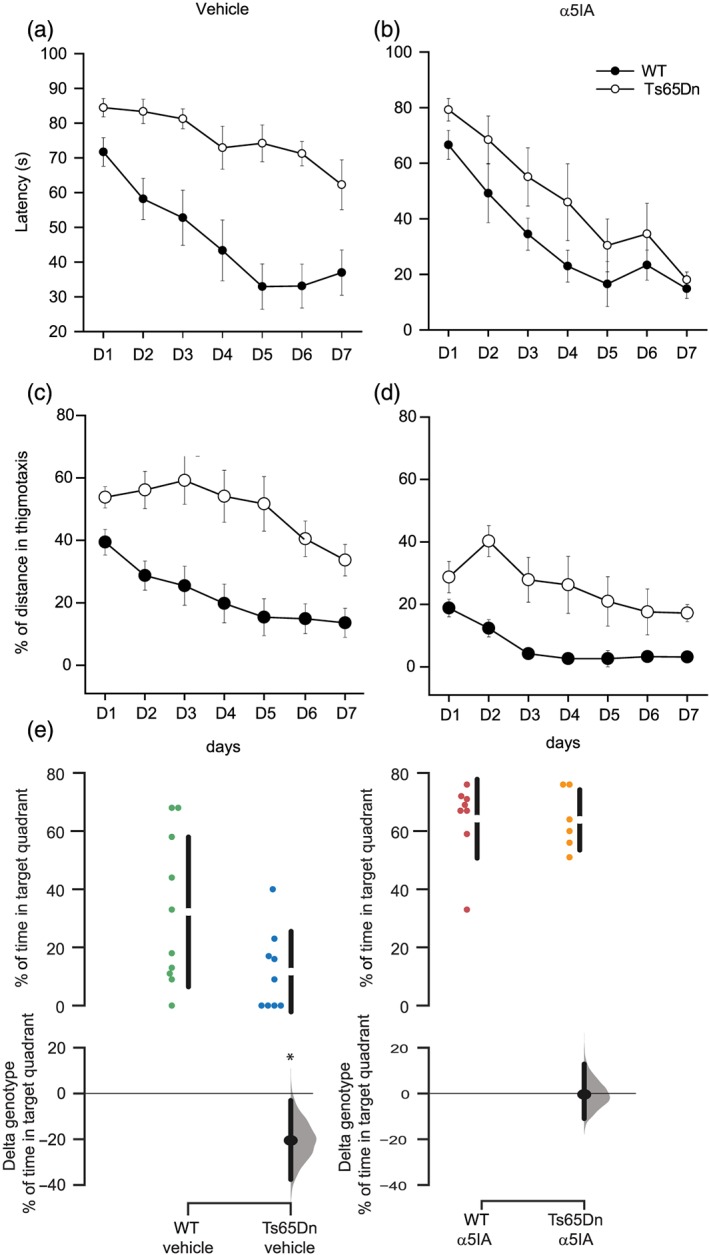Figure 4.

A single injection of α5IA produces a long‐term restoration of spatial memory deficits in Ts65Dn mice in the Morris water maze task. (a) Latency to reach the platform was significantly increased in vehicle‐treated Ts65Dn mice, compared with vehicle‐treated wild‐type mice. (b) On the contrary, there was no difference in latency to reach the platform in α5IA‐treated Ts65Dn mice compared to α5IA‐treated wild‐type mice (ANOVA with repeated measures). (c, d) Percentage of thigmotaxis (time spent in the 10‐cm‐wide peripheral annulus of the pool) was much higher in vehicle‐treated Ts65Dn mice, compared with vehicle‐treated wild‐type mice (c). This difference was attenuated after one injection of α5IA 30 min before the first training session but remained different between WT and Ts65Dn mice. (e) Probe test session confirmed that vehicle‐treated Ts65Dn mice spent less than 25% time in the target quadrant (e) while the other groups spent more than 25% of their exploration time in the target quadrant (e). Results are shown as mean ± SEM. One‐way ANOVA and ANOVA for repeated measures with Dunnett's post hoc test (a–d); 95% confidence interval of the mean difference obtained after bootstrap resampling (e)
